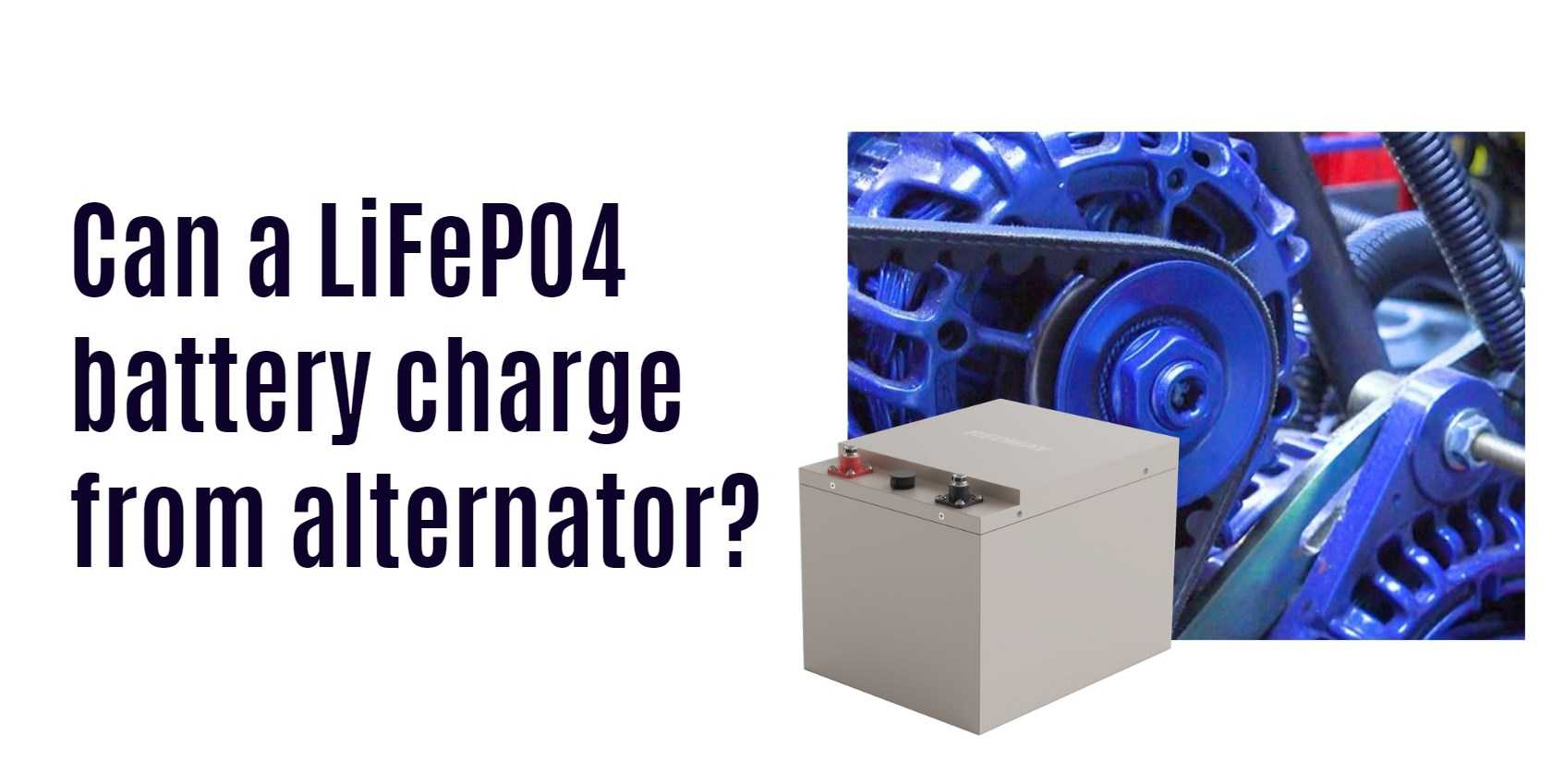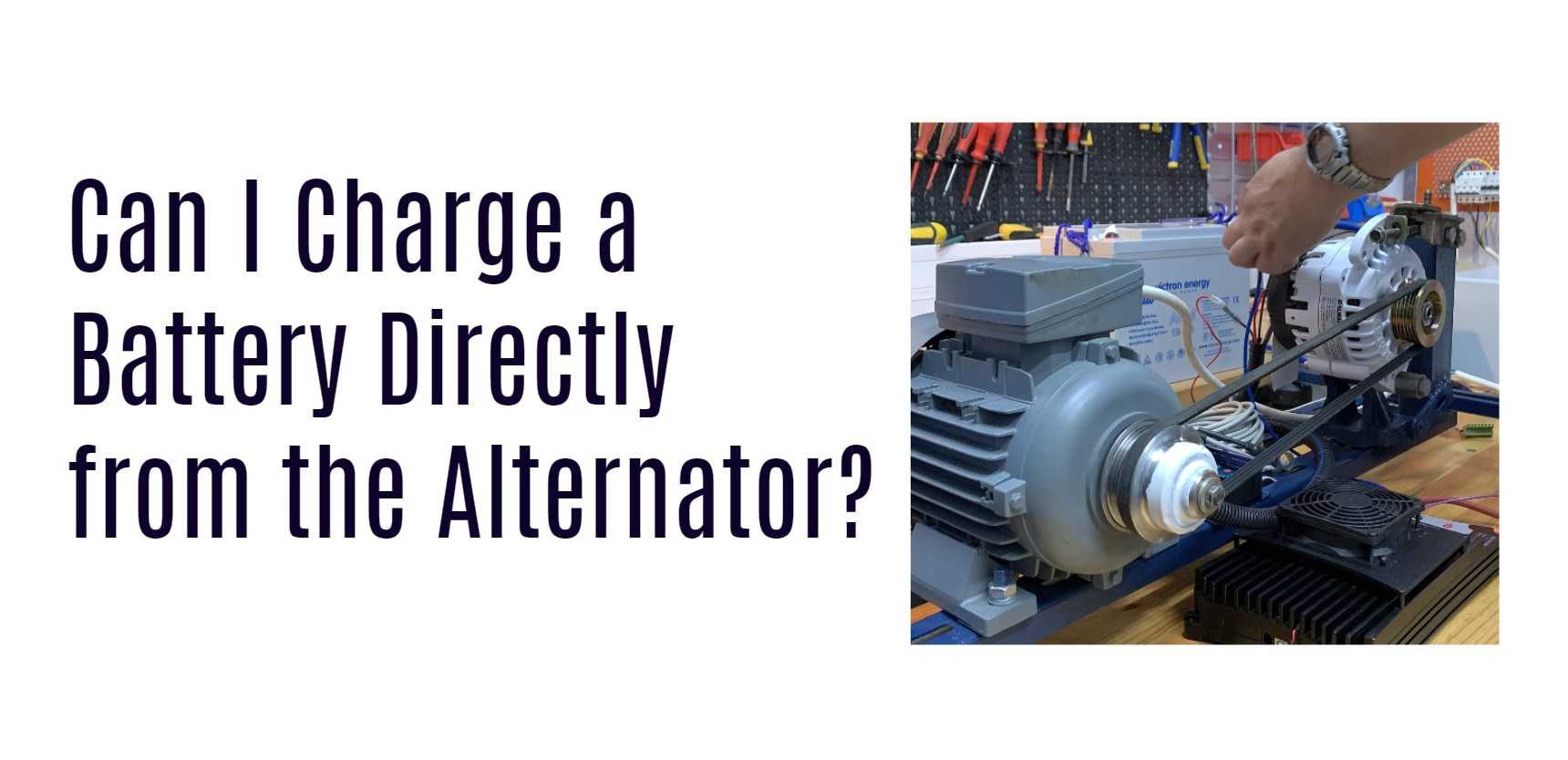-
Alternator Quality and Voltage Regulation: The quality of the alternator plays a significant role in charging LiFePO4 batteries. Low-quality alternators with poor voltage regulation can cause the Battery Management System (BMS) to disconnect the batteries. This can affect the charging process and battery performance.
-
DC to DC Chargers: To ensure proper charging of LiFePO4 batteries from an alternator, it is recommended to use a DC to DC charger specifically designed for LiFePO4 batteries. These chargers provide the necessary voltage regulation and protection for the batteries, ensuring efficient and safe charging.
-
Manufacturer’s Guidelines: It is important to consult the manufacturer’s guidelines for the LiFePO4 battery and the alternator to determine the recommended charging methods. Following the guidelines will help optimize battery performance and ensure longevity.
Let’s delve into the details of charging LiFePO4 batteries from an alternator.
What is the Best Way to Charge a LiFePO4 Battery?
-
Dedicated LiFePO4 Charger: The optimal way to charge a LiFePO4 battery is by using a dedicated charger designed specifically for these batteries. These chargers are equipped with the necessary algorithms and voltage settings to ensure safe and efficient charging.
-
Recommended Charge Voltage: LiFePO4 batteries have a recommended charge voltage of 14.40V, which translates to 3.60V per cell. It is important to set the charger to this voltage to prevent overcharging and maintain the battery’s health.
-
CCCV Charging Method: The CCCV (Constant Current Constant Voltage) charging method is commonly used for LiFePO4 batteries. This method involves charging the battery with a constant current initially and then transitioning to a constant voltage once the desired charge level is reached.
Can I Charge My Lithium Batteries Using the Alternator?
-
Battery Management System (BMS): When charging lithium batteries from the alternator, it is essential to have a battery management system (BMS) in place. The BMS helps regulate the charging process and ensures that the batteries are charged within safe limits. It prevents overcharging, which can lead to battery damage or even safety hazards.
-
Compatibility with Alternator Output: It is important to ensure that the alternator’s output is compatible with the voltage and current requirements of the lithium batteries. The alternator should be capable of providing the necessary charging voltage and current without exceeding the battery’s limits.
-
Safety Considerations: Charging lithium batteries directly from the alternator requires careful attention to safety. It is important to follow manufacturer guidelines and recommendations to prevent any potential risks or damage to the batteries. Regular monitoring of the charging process and ensuring proper ventilation are also important safety measures.
How Do You Charge a LiFePO4 Battery with a Generator?
-
DC to DC Charger:
To charge a LiFePO4 battery with a generator, you will need a DC to DC charger. This charger acts as a bridge between the generator and the battery, converting the AC power from the generator into DC power that is suitable for charging the LiFePO4 battery. -
Manufacturer’s Instructions:
It is crucial to follow the manufacturer’s instructions and recommendations for the specific LiFePO4 battery you are using. Different LiFePO4 batteries may have slightly different charging requirements, so it is important to ensure that you are using the correct charger and following the appropriate charging procedures. -
Charging Time:
The charging time for a LiFePO4 battery with a generator will depend on various factors, such as the capacity of the battery and the power output of the generator. On average, a LiFePO4 battery can be fully charged in approximately 5 hours to reach 100% capacity or in around 2 hours to reach 97% capacity.
Can I Charge a Battery Directly from the Alternator?
Charging a LiFePO4 battery directly from the alternator is possible, but it requires the use of a LiFePO4-specific battery isolator or a DC-DC converter. These devices ensure that the alternator’s voltage and current are regulated to match the LiFePO4 battery’s charging requirements. It is essential to consult the manufacturer’s instructions and seek professional advice when setting up a direct charging system.
Wholesale lithium golf cart batteries with 10-year life? Check here.
How Do You Charge a LiFePO4 Battery with a Generator?
Charging a LiFePO4 battery with a generator follows similar principles as charging from an alternator. It requires a LiFePO4-specific battery charger or a battery management system (BMS) to regulate the charging process and prevent overcharging or undercharging. It is important to ensure that the generator’s voltage and frequency are within the LiFePO4 battery’s acceptable range to avoid any damage to the battery.
FAQs
- Q: Can I charge a LiFePO4 battery with a regular lead-acid battery charger?
- A: It is not recommended to charge a LiFePO4 battery with a regular lead-acid battery charger, as the charging profiles and voltage requirements are different.
- Q: Do I need a battery management system (BMS) to charge a LiFePO4 battery from an alternator?
- A: Yes, a LiFePO4-specific battery management system (BMS) is necessary to regulate the charging process and ensure the battery is charged safely and efficiently.
- Q: Can I charge a LiFePO4 battery directly from a solar panel?
- A: Yes, it is possible to charge a LiFePO4 battery directly from a solar panel, but it requires a charge controller or a solar charge regulator to regulate the charging process and prevent overcharging.
Conclusion
In conclusion, while it is possible to charge a LiFePO4 battery from an alternator or a generator, it requires the use of additional components and proper voltage regulation. To ensure safe and efficient charging, it is recommended to use a LiFePO4-specific battery charger or a battery management system (BMS). Redway Power, as an expert in lithium batteries, offers high-quality OEM Lithium LiFePO4 batteries that provide excellent performance and reliability. Trust Redway Power for reliable and safe battery solutions.
Want OEM lithium forklift batteries at wholesale prices? Check here.







